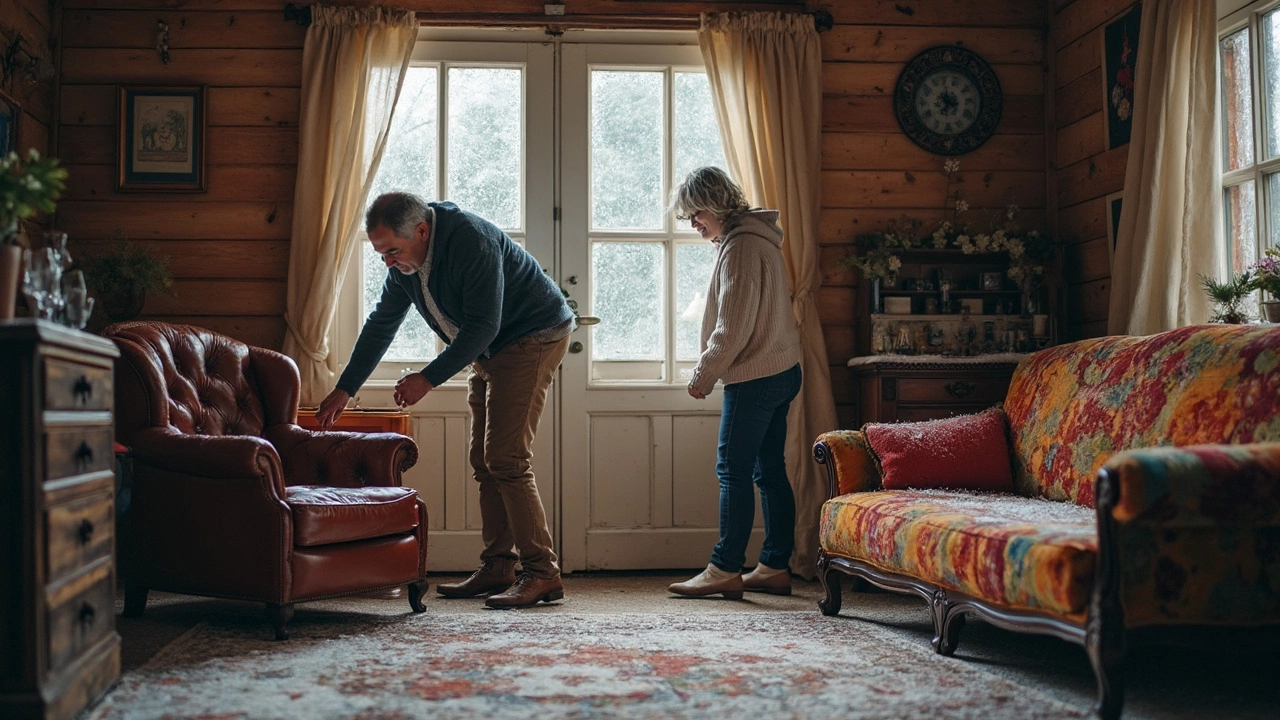Temperature and Furniture: How Heat and Cold Impact Your Home
Ever notice a wooden table pulling apart after a hot summer or a leather sofa stiffening in the winter? Temperature isn’t just about comfort; it literally changes how your furniture looks and feels. Understanding those changes helps you pick the right pieces and keep them looking fresh for years.
Heat, Humidity, and Wood
Warm air expands wood fibers, while humidity pushes moisture into the grain. The combo can cause swelling, warping, or even cracks. If you live in a sunny loft, place wooden tables away from direct sunlight and use coasters for drinks that might leave water rings. A simple humidifier in dry months can stop the wood from shrinking and splitting.
Cold, Drafts, and Upholstery
Cold air makes fabric and leather tighter, which can lead to tearing or a stiff feel. Drafty windows are the main culprits, especially in older houses. Wrap sofas with a breathable throw during winter and keep the thermostat steady; sudden temperature drops are worst for leather. For fabric pieces, a light vacuum before the cold hits removes dust that could become abrasive.
Outdoor furniture faces the toughest temperature swings. Sun can bleach synthetic cushions, while rain and snow expose metal frames to rust. Choose weather‑resistant materials like powder‑coated aluminum or teak, and store cushions in a dry box when you’re not using the patio.
Temperature doesn’t just affect the look; it can change how comfy a piece feels. A mattress or futon that’s too warm will feel sticky, while a cold one feels hard. Adding a breathable mattress topper or a thin quilt can balance the temperature, making sleep more restful.
One easy habit is to rotate cushions and pillows every few weeks. This spreads wear evenly, so no spot gets over‑exposed to heat from a nearby heater or cold from a window. The same goes for rugs; flipping them helps keep the backing from absorbing moisture that can cause mold.
When you buy new furniture, ask about the finish. Low‑VOC (volatile organic compounds) finishes release fewer chemicals that can trap heat, keeping wood cooler. For leather, a quality oil‑based conditioner protects against both drying out in winter and cracking in summer.
Finally, keep an eye on the indoor climate. A stable temperature between 68‑72°F (20‑22°C) and 40‑60% humidity is kind of the sweet spot for most furniture. A cheap digital hygrometer tells you if you need a humidifier or a dehumidifier, and the savings on repairs are worth it.
By respecting how temperature moves through your home, you’ll make smarter buying choices, extend the life of existing pieces, and stay comfortable all year round.
How Cold Is Too Cold for Furniture? Storage Guidelines You Can't Ignore
Wondering if chilly storage spaces can ruin your furniture? This article breaks down the exact temperatures that could spell trouble for your wood, leather, and fabric pieces. You'll get practical tips on keeping furniture safe in the cold and learn which materials are the most vulnerable. Discover simple ways to winter-proof your storage and avoid costly surprises when it's time to bring everything back indoors. No jargon here—just clear, useful advice for getting furniture through any freeze.
More
